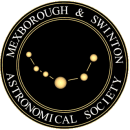The Lunar 100
Guest Speaker
Thursday, 22nd July 2021 (19:45 - 22:00)
Venue: Virtual Meeting
The Lunar 100 (L100) is a list of one hundred of the most interesting features to observe on the Moon. The list was first described by Charles A. Wood in the article The Lunar 100 in Sky & Telescope magazine, April 2004.
With this selection, Wood tried to give astronomy fans a list similar to the Messier catalog of deep-sky objects, but of a more familiar object, the Moon. The objects listed include craters, seas, mountains, and other features, and are arranged in ascending order of observational difficulty. The Moon is L1, L2 is Earthshine, L3 is the contrast between the dark seas and the lighter highlands. Starting from L4 we have geological features, such as craters (Tycho, L6), valleys (Vallis Schröteri, L17) and mountains (Leibnitz Mountains, L96). The last entry is L100, the Marginis Sea.
The talk is free and is open to members and non-members
Contact deputy.chair@msas.org.uk
Speaker: Lilian Hobbs
Today I am a lady of leisure, spending my time doing photography, astronomy, motorcycling, playing golf, cycling, touring in my motorhome, volunteering for SERV Wessex and marshalling cycle events.
I was the founder of Database Evolution Ltd, a company which specialised in providing the right database solution such as relational, column store databases and database machines. For over 30 years I worked on a wide variety of computer databases, including Vertica, Greenplum, Oracle & Rdb and the Exadata database machine. At Oracle I was responsible for a number of features in the Oracle Database which were developed either at Oracle's headquarters in San Francisco, or at the New England Development Centre in New Hampshire in the USA, although I was located on the south coast of the UK. I also developed Oracle's ILM strategy which pioneered using the database as the platform for ILM rather than a storage device.
My Phd was awarded by Southampton University in the UK for research into a software tool which automated the process of creating a CODASYL database from the conceptual stage through to physical design. My first days with databases involved building the largest CODASYL database in Europe. Over the years I have been fortunate to have worked on many systems that you probably use daily and take for granted. It can be very interesting seeing what goes on behind the scenes.
Just remember that whenever somebody tells you the computer did it, it only does what a human told it to do!
Learn more about Lilian Hobbs
